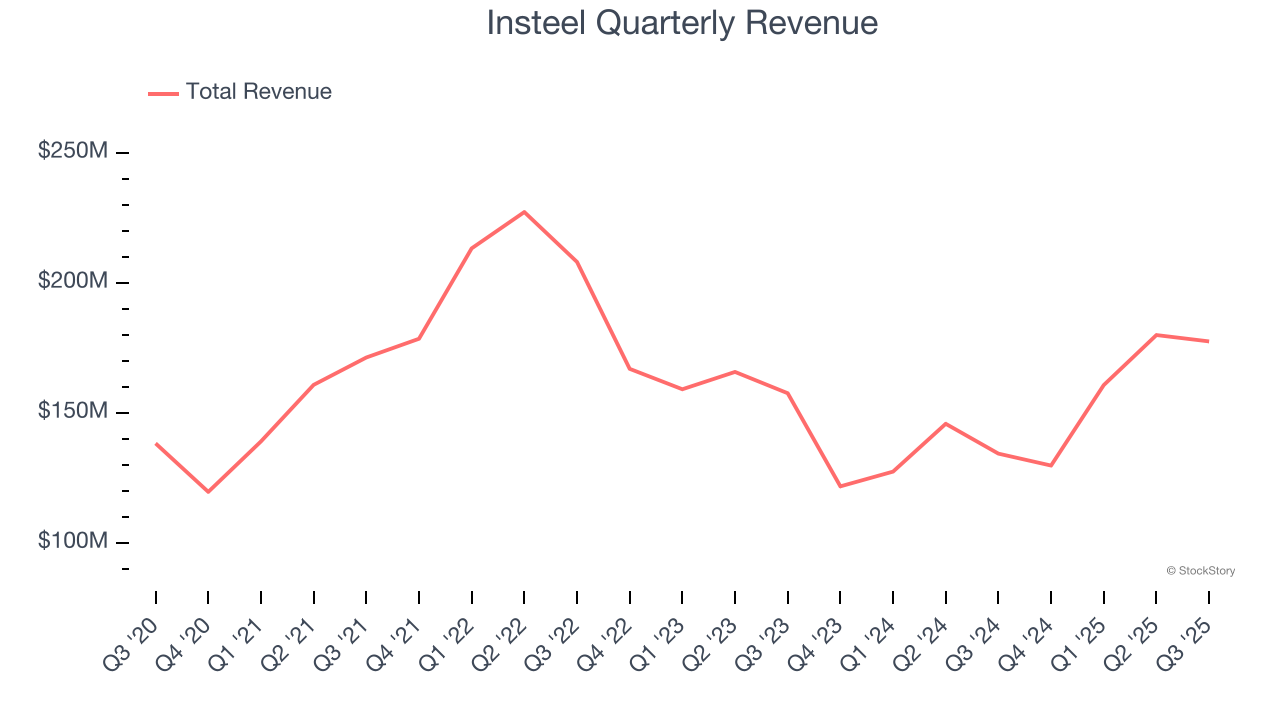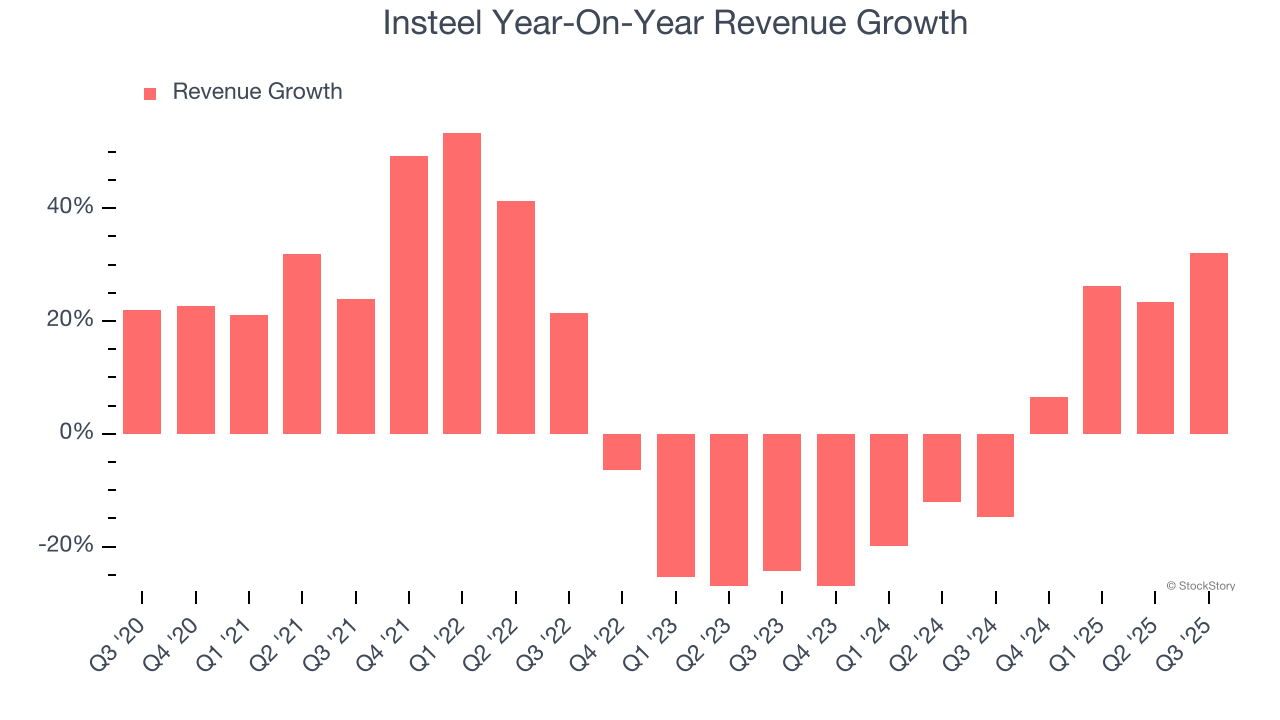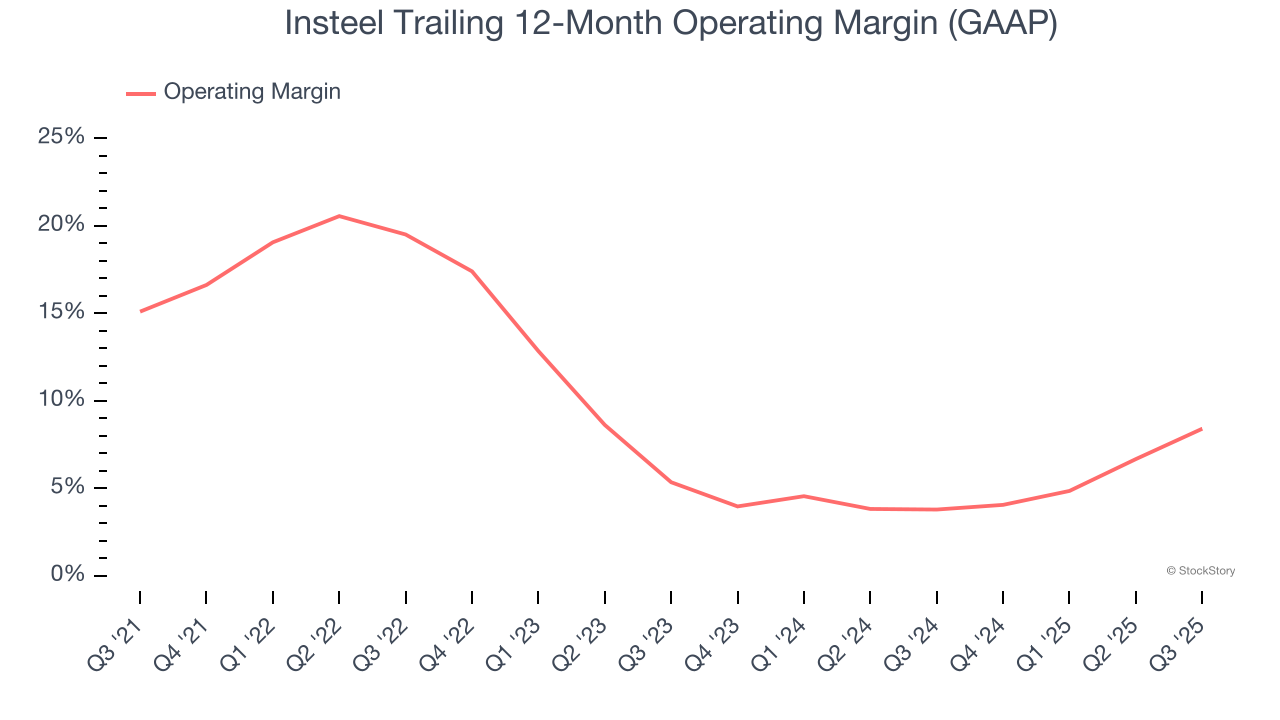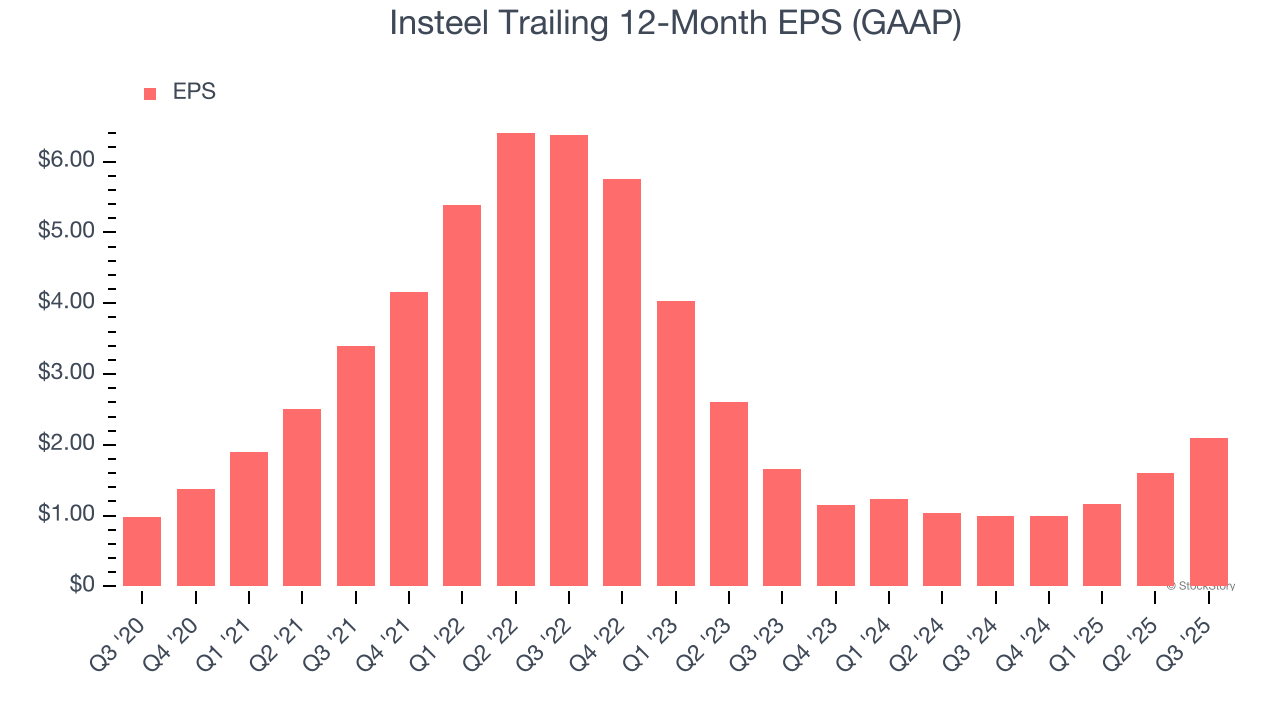
Steel wire manufacturer Insteel (NYSE: IIIN) missed Wall Street’s revenue expectations in Q3 CY2025, but sales rose 32.1% year on year to $177.4 million. Its GAAP profit of $0.74 per share was 5.1% below analysts’ consensus estimates.
Is now the time to buy Insteel? Find out by accessing our full research report, it’s free for active Edge members.
Insteel (IIIN) Q3 CY2025 Highlights:
- Revenue: $177.4 million vs analyst estimates of $181 million (32.1% year-on-year growth, 1.9% miss)
- EPS (GAAP): $0.74 vs analyst expectations of $0.78 (5.1% miss)
- Adjusted EBITDA: $24.94 million vs analyst estimates of $24.84 million (14.1% margin, in line)
- Operating Margin: 10.7%, up from 3.6% in the same quarter last year
- Free Cash Flow was -$18.73 million, down from $14.54 million in the same quarter last year
- Market Capitalization: $728.6 million
Company Overview
Growing from a small wire manufacturer to one of the largest in the U.S., Insteel (NYSE: IIIN) provides steel wire reinforcing products for concrete.
Revenue Growth
A company’s long-term performance is an indicator of its overall quality. Any business can have short-term success, but a top-tier one grows for years. Regrettably, Insteel’s sales grew at a mediocre 6.5% compounded annual growth rate over the last five years. This was below our standard for the industrials sector and is a tough starting point for our analysis.

Long-term growth is the most important, but within industrials, a half-decade historical view may miss new industry trends or demand cycles. Insteel’s recent performance shows its demand has slowed as its revenue was flat over the last two years. 
This quarter, Insteel pulled off a wonderful 32.1% year-on-year revenue growth rate, but its $177.4 million of revenue fell short of Wall Street’s rosy estimates.
Looking ahead, sell-side analysts expect revenue to grow 15.5% over the next 12 months, an improvement versus the last two years. This projection is eye-popping and indicates its newer products and services will spur better top-line performance.
Today’s young investors won’t have read the timeless lessons in Gorilla Game: Picking Winners In High Technology because it was written more than 20 years ago when Microsoft and Apple were first establishing their supremacy. But if we apply the same principles, then enterprise software stocks leveraging their own generative AI capabilities may well be the Gorillas of the future. So, in that spirit, we are excited to present our Special Free Report on a profitable, fast-growing enterprise software stock that is already riding the automation wave and looking to catch the generative AI next.
Operating Margin
Insteel has managed its cost base well over the last five years. It demonstrated solid profitability for an industrials business, producing an average operating margin of 11.1%. This result was particularly impressive because of its low gross margin, which is mostly a factor of what it sells and takes huge shifts to move meaningfully. Companies have more control over their operating margins, and it’s a show of well-managed operations if they’re high when gross margins are low.
Analyzing the trend in its profitability, Insteel’s operating margin decreased by 6.7 percentage points over the last five years. This raises questions about the company’s expense base because its revenue growth should have given it leverage on its fixed costs, resulting in better economies of scale and profitability.

In Q3, Insteel generated an operating margin profit margin of 10.7%, up 7.1 percentage points year on year. The increase was solid, and because its operating margin rose more than its gross margin, we can infer it was more efficient with expenses such as marketing, R&D, and administrative overhead.
Earnings Per Share
Revenue trends explain a company’s historical growth, but the long-term change in earnings per share (EPS) points to the profitability of that growth – for example, a company could inflate its sales through excessive spending on advertising and promotions.
Insteel’s EPS grew at a spectacular 16.5% compounded annual growth rate over the last five years, higher than its 6.5% annualized revenue growth. This tells us the company became more profitable on a per-share basis as it expanded.

Like with revenue, we analyze EPS over a shorter period to see if we are missing a change in the business.
For Insteel, its two-year annual EPS growth of 12.5% was lower than its five-year trend. We still think its growth was good and hope it can accelerate in the future.
In Q3, Insteel reported EPS of $0.74, up from $0.24 in the same quarter last year. Despite growing year on year, this print missed analysts’ estimates, but we care more about long-term EPS growth than short-term movements. Over the next 12 months, Wall Street expects Insteel’s full-year EPS of $2.10 to grow 41.9%.
Key Takeaways from Insteel’s Q3 Results
We struggled to find many positives in these results. Its EPS missed and its revenue fell short of Wall Street’s estimates. Overall, this quarter could have been better. The stock traded down 5.8% to $35.38 immediately following the results.
Insteel’s earnings report left more to be desired. Let’s look forward to see if this quarter has created an opportunity to buy the stock. The latest quarter does matter, but not nearly as much as longer-term fundamentals and valuation, when deciding if the stock is a buy. We cover that in our actionable full research report which you can read here, it’s free for active Edge members.





